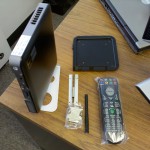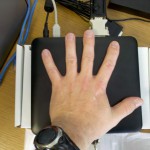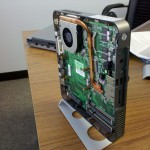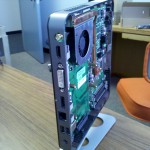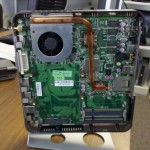Luckily Blaise Sheridan is not afraid of heights, as he climbs up the UD 2-megawatt wind turbine for the second time. With his Master’s thesis revolving around wind energy, he is one of only four people from UD certified to climb the turbine. Although there is an elevator (more technically termed a personnel or ‘man’ lift), it can only be used by those who take a more intensive 4-day training course. Instead, a 2-day Fall Protection/Competent Climber class was taken by two facilities employees (Don Smith and Rodney McGee), as well as two UD students (Blaise and DeAnna Sewell). With this course under their belt, they can climb the ladder to the top of the 256-foot-tall-turbine. For their safety, they are always connected to a guide wire that clips onto the cable grab of each climbers harness. The cable ensures that if a climber falls they will only drop less than a foot.
This goal of this trip was to string up 3 cables to install bat microphones. The microphones will allow researchers to see how often bats pass around the turbine. This anticipated one-day job ended up taking about 2.5 days due to lightning and the large amount of on site planning that needed to take place. With the help of a Gamesa contractor, Blaise and Rodney were able to install the research equipment while the contractor performed routine maintenance and provided his expert guidance.
The turbine is currently producing more electricity than projected, although how much more is still being studied. On average, it produces more energy than the university needs, which makes the excess available to the town!
Inside the nacelle, the bus sized structure on the top of the tower where all the interesting mechanical and electrical components are housed, Blaise notes, “It must be at least 120 degrees” from the waste heat given off by the electrical transformers, not to mention all the gearboxes, friction and the fact that heat rises up the turbine. But, outside, on top of the nacelle, there’s enough airflow to cool you off! Blaise admits it can be very tiring to climb but the incredible view from the top is worth it. He discloses his favorite part is to watch the wake off the boats coming into Roosevelt Inlet. With the hope of additional renewable energy options in the future, “It’s still very novel for a university to have this turbine and its been a once in a life time experience…one to check off the bucket list. Not to mention it’s a great bar story.”

